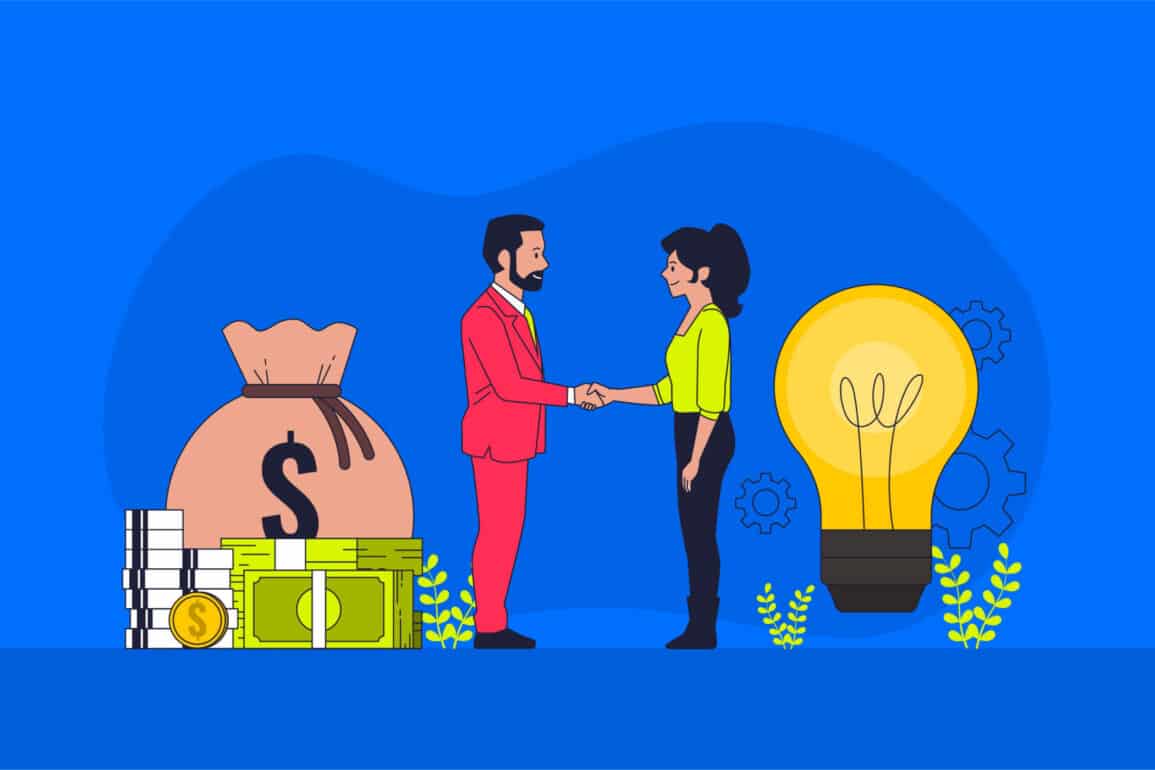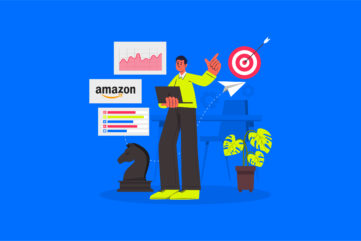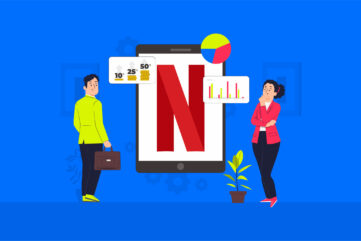What is sponsorship marketing? The definitive guide to sponsorship in marketing

What is sponsorship marketing, and why is it so beneficial to modern brands? Sponsorship in marketing is a valuable and powerful tool for companies looking to boost brand awareness, enhance their reputation, and generate new leads.
One of the core “partnership marketing” strategies leveraged by companies today, sponsorships provide organizations with a valuable way of aligning themselves with another entity.
Used correctly, this form of advertising can turbocharge brand reach, while helping companies to differentiate themselves from other, competing organizations.
Companies spend billions of dollars annually on marketing sponsorships designed to attract new customers and increase conversions. Yet, this incredible advertising tool still needs to be utilized more in the promotional space.
Many businesses assume sponsorships are intended for larger companies or worldwide brands.
However, the truth is that any company can benefit from the right sponsorship. Whether you’re a non-profit, small family-run business, or a budding start-up, here’s everything you need to know about marketing and sponsorship.
What is sponsorship in marketing? Marketing and sponsorship
So, what is sponsorship marketing?
Sponsorship marketing is a brand partnership between two entities. A brand chooses to align itself with another company, organization, or non-profit to achieve a specific goal. Usually, the partnership involves benefits for both sides of the equation.
The brand “sponsoring” the other entity will gain access to increased brand awareness, reach, and exposure, potentially allowing them to collect more customers.
The “sponsored” brand receives financial compensation or another benefit, like an equal promotion from the sponsoring company.
For businesses looking to grow, sponsoring another entity can be an excellent way to build relationships or affinity with an audience while unlocking new sales opportunities.
Some of the events, organizations, and concepts a business can sponsor might include:
Charities
Companies can sponsor non-profits in exchange for advertising opportunities. For instance, Marks & Spencer in the UK sponsors the “Breast Cancer Now” charity.
Trade shows
Sponsoring industry trade shows can boost exposure and demonstrate their value to their target market.
Events
Companies can sponsor community or virtual events and place their banners or advertisements throughout the event to capture audience attention.
How the sponsored company promotes the sponsoring brand can vary depending on the partnership deal. For example, a company sponsoring a charity walk could ask the charity to place its logo on the advertising for the event and the numbers given to walkers.
Sponsorship marketing definition: Types of sponsorship marketing
Sponsorship marketing can come in many forms, depending on the partnership agreed upon by both parties. Generally, there are two major types of sponsorship marketing, “financial” or cash sponsorship, and “in-kind” sponsorship.
Each option has its own unique benefits for both of the groups or entities involved.
What is financial or cash sponsorship?
Financial or cash-based sponsorships are perhaps the most common form of sponsorship in marketing.
With this strategy, the sponsor gives money to a “beneficiary” in exchange for a promotion or other services.
One example is Rolex. Rolex, the leading watch brand, has sponsored the “TED” content streaming platform since 2008. This ensures the non-profit can continue sharing powerful talks about all topics with the world for free.
Financial sponsorships are very straightforward. The “sponsoring” company benefits from increased exposure, better brand awareness, and an improved reputation, while the sponsored brand receives financial compensation.
However, there are different forms of financial sponsorship, such as:
Series sponsorships
This high-level sponsorship often includes the sponsor’s name and logo in the event series title. For example, a company could pay to sponsor a motorsports company for its entire competition.
Title sponsorships
With title sponsorships, the sponsor only pays to be advertised by a company or group for a single event.
General sponsorship
General sponsors provide other companies and groups with regular payments in exchange for the option to promote their partnership with that brand.
Official sponsors
Official sponsors generally take a percentage of the funds raised for an event. For instance, a sponsor might be the “official partner” of a sports team.
Participating sponsors
Participating sponsors offer a small amount of money to a company or group alongside a range of other brands. They, therefore, share their promotion and brand reach opportunities with different companies.
Team sponsors
In the sporting world, team sponsors specifically fund individual teams and often place their logos on the uniform for each group.
What is in-kind sponsorship?
In-kind sponsorships switch financial reimbursement for the sponsored team out for something with equal value. For example, Hallmark sponsored the US Olympic Team at the Salt Lake City Winter Games in exchange for valuable printing services for the group’s branding.
Companies like Hilton hotels have also chosen “in-kind” sponsorship. Hilton members can use points from staying with the company to buy events through Live Nation. Live Nation, in turn, features Hilton hotel room options on its website after customers make a purchase.
Just like with financial sponsorship, there are a few different ways companies can get involved with in-kind sponsorship opportunities, such as:
Venue partnerships
This sponsor can host events at a specific venue for a discounted rate or free of charge to gain promotional opportunities.
Prize sponsors
Prize sponsors donate items from their company to an event, such as items for an auction or rewards.
Food sponsors
Food sponsors offer attendees free food at an event or experience in exchange for promotion.
Digital sponsors
Online hosting providers, websites, and other organizations can live stream events or promote companies in exchange for equal promotion.
Media sponsorships
Media companies can promote a sponsored company in exchange for branding within an event.
Technical sponsors
Technical sponsors offer products or services to support a team, event, or another instance, such as equipment and support.
What are promotional partners?
Promotional partners are another lesser-mentioned form of sponsorship marketing. These types of sponsors often fall under the “in-kind” segment for sponsorships. A promotional partner supports an event, service, or product advertising.
The promotion can occur across a multitude of different platforms and use a variety of different strategies.
In exchange for their efforts, the promoter often receives something in return, such as free products, a speaking spot at an event, or something similar. Influencers usually take part in “promotional partnerships.”
In exchange for discounted products, free items, and other benefits, they take photos of themselves in front of branded logos or using specific items.
What are the benefits of sponsorship in marketing?
As a type of promotional partnership, sponsorship marketing involves two groups coming together to agree on a deal that benefits both sides. Like many forms of partnership marketing, sponsorship in marketing gives both companies opportunities for growth.
However, the exact nature of the partnership may vary from one instance to the next.
The most common form of sponsorship marketing revolves around financial retribution. “Cash sponsors” provide the entity they want to sponsor with money in exchange for advertising and promotion.
McDonald’s, Coca-Cola, and Pepsi invest billions of dollars into annual sponsorship campaigns. However, benefits for the sponsored brand don’t have to be limited to cash. They can also include assets, resources, and like-for-like promotions.
For the brands who “sponsor” other companies, there are several key benefits, such as:
Improved brand visibility
Sponsorships help to place brand images and content directly in front of the ideal target audience. Working with a specific charity or sponsoring an event allows companies to reach countless customers they may not encounter otherwise.
In many sponsorships, companies gain access to everything from radio spots and video ads to social media posts.
In some cases, companies sponsoring other entities will also provide free giveaway items, which include their logos. This can extend the reach of the brand even further.
The key to success in sponsorship marketing is ensuring you choose the right partner brands to work with. Your sponsored company should already have a clear connection with your target audience.
Increased leads and sales
If you focus on finding the right entities and organizations to sponsor, you should be able to attract “qualified leads” to your company. Sponsored companies work on driving traffic back to websites and products for the companies who support them.
Because these customers already have plenty of information about the company they’re interacting with and understand that brand’s personality, they’re more likely to make a sale.
Sponsorships can help align companies with their customers emotionally by showing a company shares the same values as its target audience.
Stronger brand reputation
Today’s customers want a deeper connection to the companies they buy from.
They want to see evidence that these businesses have the same priorities and values. Sponsorship can help with this. A company that sponsors a non-profit organization relevant to its target audience is more likely to come across as compassionate and caring.
Sponsoring other entities can also improve a company’s reputation by demonstrating its commitment to strengthening a local community or economy.
Improved content marketing opportunities
Sponsorships allow companies to create plenty of fresh material for their content marketing campaigns.
Organizations can produce blogs, videos, and podcasts leading up to, during, and after the sponsorship event. They can also “reblog” or promote some of the content created by the organization they’re sponsoring.
At the same time, companies also get increased promotion from “earned media” outlets reporting on the sponsorship. Many news outlets will draw attention to major events and charity sponsorships in different industries, helping to build brand recognition further.
Sponsorship marketing examples
Sponsorship marketing is more common than most people realize. Countless companies, large and small, create partnerships with other entities and organizations to improve their chances of attracting customers and making sales.
There are some areas where sponsorship marketing is more common. For instance, there’s a good chance you’ve seen countless football and baseball teams with their own dedicated sponsors. Additionally, most major events have sponsors, such as the Olympic games or the Super Bowl.
Let’s take a look at some of the most significant sponsorship marketing examples.
Sponsorship marketing in sports
Sports sponsorship is one of the most common forms of sponsorship marketing. When brands align with a specific team or competition, they can take advantage of some of the loyalty, and affinity customers feel towards their latest teams.
Sponsorship in sports is also crucial to keeping sports running as normal. Most people don’t pay to watch televised football games and similar events because these occasions are always financed and supported by existing sponsors.
For example, the European Rugby Champions Cup is sponsored by Heineken, while the Emirates group sponsors the Arsenal stadium. Chevrolet sponsors the Manchester United Team in UK football and shows its logo on their kit. Even individual sports professionals have their own sponsorships.
An example of an excellent sponsorship marketing effort in the Sports landscape comes from PepsiCo. The powerful worldwide brand is one of the top US sponsors worldwide, spending millions of dollars annually.
One of the key events Pepsi sponsors is the NFL Super Bowl. In 2020, Pepsi invested more than $100 million into this event alone.
PepsiCo’s support of the NFL even enabled the group to extend their standard half-time show to a much larger platform. Not only did this increase the show’s reach, but it also gave Pepsi a great way to promote its products to a wider audience.
In most cases, the half-time show frequently brings in more viewers than the actual game.
Sponsorship marketing in events
Similar to the sports landscape, the events environment relies heavily on sponsorship from leading brands. It costs a lot of money to run a basic event. After all, there are countless real-estate, operational, and catering costs to think about.
Because of this, many major events appeal to many different sponsors simultaneously to raise more funds.
In exchange for their financial support, these brands are displayed on signage and banners throughout the event and promoted by the event’s website in most cases. There are countless examples of companies sponsoring events throughout the world today.
Mastercard sponsors the Olivier Awards, while Google regularly sponsors events connected to technology.
Aside from offering financial aid, some companies can also help events in other ways by offering them access to promotional items, event signage, branding support, and even hosting sessions.
One of the best examples of sponsorship marketing connected to events comes from Coca-Cola. This famous brand has been a primary sponsor of the Olympic games for decades, starting in 1928. In 2016, Coca-Cola supported the Rio Olympic Games.
Not only did the company get excellent promotion throughout the games themselves, but they also extended their campaign further.
The #ThatsGold campaign created by Coca-Cola was a year-long campaign that spread across multiple social media platforms and television and radio ads. The three-phase marketing strategy attracted young customers with influencers, musicians, and Olympic athletes.
Overall, Coca-Cola’s campaign led to 30 million video views and a massive audience reach.
Sponsorship marketing on television and radio
Television and radio sponsorship is one of the most effective ways for companies to reach a wide target audience rapidly. Most of the top television shows worldwide are sponsored by a specific company.
Money Super Market sponsors various films on Channel 4 in the United States. Plus, companies like Tide sponsor shows in the US.
Depending on the channel and the partnership, TV sponsors can align themselves with a single program, an entire stream of programming, or certain time slots. It’s also possible for some brands to sponsor entire channels and genres of content.
In exchange for sponsorship funding, sponsoring brands can display their ads before, during, and after different programs on both radio and television. In some cases, companies will also place products within shows to increase customer awareness.
One excellent example of a company leveraging television-based sponsorship marketing is Just Eat.
In 2017, the food delivery service signed a multi-year deal with the “X-Factor,” considered one of the largest properties in the commercial TV landscape. The show was regularly viewed by around 39 million people.
The sponsorship deal included classic TV indents worth around £30 million (about $34 million at the time) and displayed at the program’s start and end of the commercial breaks. Additionally, Just Eat also launched its own “Chef Factor” competition to help find the best chefs around the world.
Are there any downsides to sponsorship marketing?
In all its forms, sponsorship marketing can have excellent results for both brands and the entities they sponsor. However, this form of promotion does have its downsides too.
Companies investing in sponsorship marketing often find it difficult to measure precisely how much “ROI” or Return on Investment they get from each campaign.
Knowing which customers are visiting a company or buying a product is challenging because of a sponsorship deal. At the same time, sponsorship marketing campaigns rarely push a customer to make a purchase directly.
They’re often intended to boost brand awareness and recognition, meaning a company might get a lot of views but only a few sales.
Additionally, sponsorship marketing can be expensive, particularly if you want to work with an in-demand entity. The more lucrative the potential partnership might be, the more you’ll need to spend to make sure you can connect with the right group.
On top of all that, there’s also a risk companies might fail to research the groups they partner with correctly. If the group ends up with a negative reputation, this will also rub off on the brands sponsoring it. This can lead to some serious reputational issues.
Even sponsored companies can have issues with sponsored marketing. They may struggle to choose which sponsor to work with for their event or have a hard time catering to the audience and the sponsor’s needs.
As such, sponsorship marketing does require a lot of prior planning, research, and careful consideration from both parts of the partnership.
Should you try sponsorship marketing?
Sponsorship marketing can be an excellent tool for businesses looking for growth and entities in search of support. Both parties benefit from various unique advantages in this promotional partnership, including increased brand awareness or financial resources.
Using sponsorship in marketing can also be an excellent way for businesses to connect with their audience on an emotional level and cultivate loyalty.
However, there are challenges to overcome. Business leaders must think carefully about the partnerships they get involved with and how they will ensure success.
Sponsorship marketing isn’t something a company should ever “rush into.” Making the wrong decision could significantly damage any organization’s reputation.
Fabrik: A branding agency for our times.
Now read these:
—Exploring the benefits of survey marketing
—Discover the benefits of referral programs
—What is quiz marketing and how to use it
—The ups and downs of sponsorship advertising
—Sponsorship vs advertising, what’s the difference?
—How does sponsorship marketing work?
—Endorsement vs sponsorship, the difference
—Top tips to getting corporate sponsorship




















